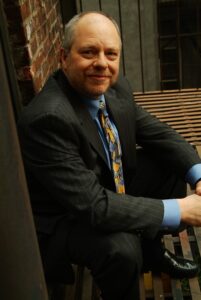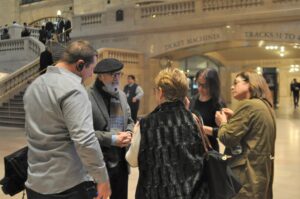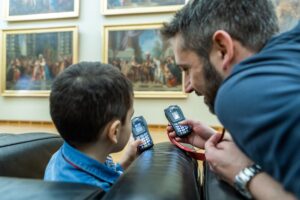
Myron Baer
In a fireside chat with the Managing Partner for the USA at Orpheo, Myron Baer, we asked some burning questions about the challenges and triumphs Orpheo has experienced. Here’s what he had to say.
What is Orpheo?
Orpheo is a global company which was started back in 1992 with a single office in France which started out as a live audio guide company. Today, we are a mobile company with 20 offices around the world. We produce everything from content, software, hardware for the museum, exhibits and tourism communities.
We have the capabilities to shoot video, design software, create all sorts of content, build apps; we even have four sound and light shows now that we created and manage in Europe. And we also are an equipment developer and builder. So today our equipment ranges from general live tour guide equipment to audio-guides to even dual use guides that provide self-guided and live guided tours in conjunction with automated GPS beacons.
Who are some of your customers?
We service staple names such as the Versailles palace, the Musée d’Orsay, the new National Museum of the US. Army, the Harley Davidson Museum. And we also service smaller clients such as the Blithewold gardens up in Rhode Island, the David Davis mansions, villa Zorayda down in Florida.
In New York city, we’ve worked with the Intrepid Museum, Grand Central Terminal, the museum of the Jewish Heritage, and other well-known institutions. We service large and small members of the tourism industry: tour operators, double-decker bus operators, CVBs, train companies, ferries and cruise operators.
How would you describe your work with the tourism community?

Obviously, we work with the tourism community through the rental and sale of our services and equipment. For example, tour groups that are on the road can use one of our live audio transmission solutions safely and effectively and tour leaders can guide a group of visitors through a city or a park or forest and interact with everyone, whether it’s a two people or 100 people tour.
But beyond that, having spent 20 years in the tourism industry myself, I can say that our newest software and hardware solutions oftentimes raise awareness and solves issues which many aren’t necessarily considering when thinking of the Visitor Experience. We have become very aware in the last few years of our content creation and its benefits. And that isn’t limited to just the storytelling – the “how” and the “whom” are preponderant.
Today we don’t just create standard copy; we also create ADA-compliant copy, Inclusive copy, curriculum-based copy and even ASL copy and video. As a matter of fact, we just won an award in Italy for an app that combines image recognition and ASL for an Andy Warhol exhibit.
What’s in development that would excite a tour operator or attraction or museum with regards to your latest developments?
 We constantly look at the markets, whether it’s tourism, museums, zoos, aquariums, and try to understand what their needs are. And what we’ve come to realize is that there is a need to somehow combine a pre-recorded tour (the “audio-guide” as we always called it), with a live tour.
We constantly look at the markets, whether it’s tourism, museums, zoos, aquariums, and try to understand what their needs are. And what we’ve come to realize is that there is a need to somehow combine a pre-recorded tour (the “audio-guide” as we always called it), with a live tour.
So if a museum is short on docents and guides, how do they do an audio-guide if they don’t have the equipment? We just released something called the “Orpheo Hybe”: it functions as both a prerecorded audio-guide and as a dual-purpose two-way communication device.
It can work with live audio from a live tour guide. By incorporating two-way communication with visitors, you can even have multiple guides leading the same tour based on precisely where the guest is. This is really great for tour operators and various tourist attractions. We continue to develop new products all the time based on our overall understanding of the market and our client feedback.
Can you name a positive and a negative that Orpheo has witnessed in recent years impacting tours and activities?

I’ll mention one thing which has acted as both a positive and a negative: cloud-based apps. When ours was first developed, it really was a great idea to replace the live tour guide with an automated process. Today, Orpheo builds Native and PWAs (progressive web apps), and they provide tremendous value by accommodating guests’ needs. For example, when a multilingual guide is not available.
With the reckoning of GPS, our solution becomes an inexpensive way for people to tour a city or a museum or a park. It can be sold in advance or right on the spot – a great return on investment. But what it lacks – and is the only negative -: personality.
What I found exciting, when I ran a walking tour company in New York, was that a tour could be spun in multiple ways, on the fly, with the guide/tour director getting a barometric reading on the guests and tailoring the tour accordingly. That is something an app can’t yet do well, and the warmth and uniqueness of a tour can get lost. I think that’s a big thing and with the rise of AI, interesting challenges on this theme are likely to arise in our industry.



